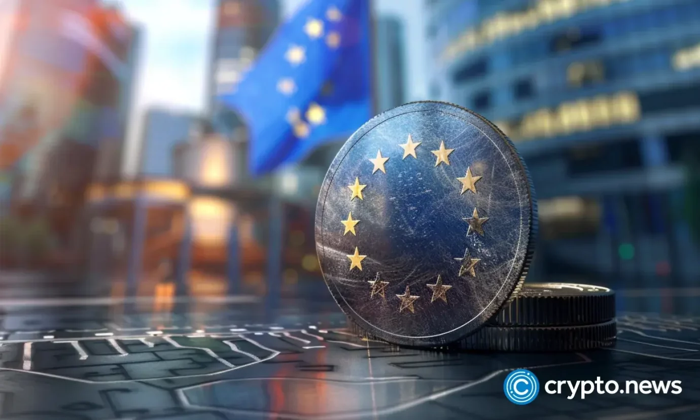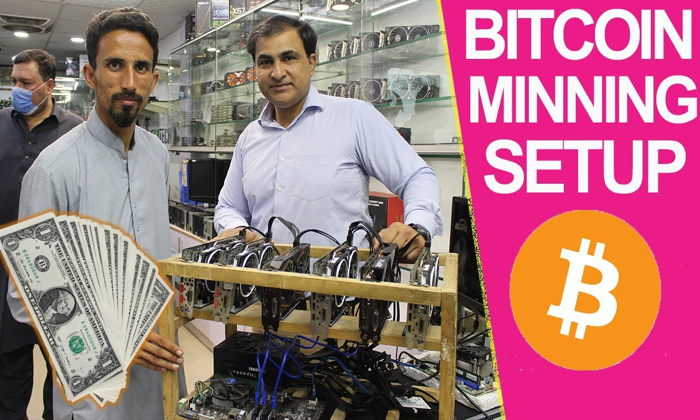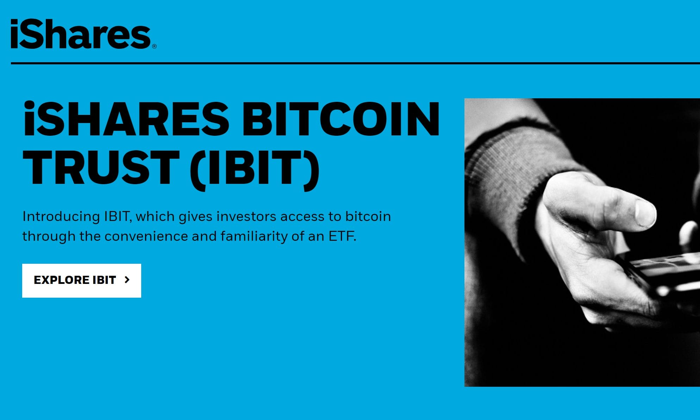The emergence of a Euro-backed stablecoin marks a significant step in bridging traditional finance with the evolving world of digital assets. With Dutch lender ING spearheading this initiative alongside other financial institutions and cryptocurrency service providers, this stablecoin aims to enhance the regulatory landscape shaped by the EU’s Markets in Crypto-Assets (MiCA) regulation. As stablecoin regulation becomes increasingly important, the need for compliance with MiCA’s licensing and collateral requirements highlights a maturation of the market. This Euro-backed stablecoin represents an innovative response to the challenges facing traditional finance stablecoins, setting a precedent for transparency and security in cryptocurrency innovations. As established banks embrace this shift, the implications for digital assets in Europe are bound to reshape the financial ecosystem.
A new form of digital currency, often referred to as a Euro-pegged cryptocurrency, is gaining traction in the financial landscape. This initiative is not just about creating another digital token but is heavily influenced by the regulatory backdrop established by the EU’s MiCA framework. With financial institutions stepping into this realm, the evolution highlights an intersection between conventional banking systems and innovative digital solutions. The rise of these regulated tokens signifies a paradigm shift in how financial services may operate, suggesting that mainstream adoption of digital currencies is on the horizon. As banks explore these alternatives, the ongoing developments in fiscal compliance and stablecoin regulation will undoubtedly play a pivotal role in shaping future transactions.
The Rise of Euro-Backed Stablecoins in Europe
The emergence of Euro-backed stablecoins marks a significant shift in the landscape of digital assets across Europe. With the EU’s Markets in Crypto-Assets (MiCA) regulation providing a solid foundation for legal compliance, banks like ING are exploring new possibilities in the realm of cryptocurrencies. This innovation allows traditional finance to intermingle with blockchain technology, offering users the security of a stable value pegged to the Euro. As more financial institutions consider launching their own stablecoins, the market is set to experience a fresh influx of Euro-pegged options that could reshape cross-border transactions.
These Euro-backed stablecoins not only aim to enhance transaction efficiencies but also mitigate the volatility associated with traditional cryptocurrencies. By aligning with MiCA’s guidelines, these stablecoins promise transparency and compliance, which are crucial factors for adoption by both consumers and financial regulators. This movement towards regulatory acceptance is especially relevant as institutions like Société Générale lead the way, showing that established banks can play a crucial role in the evolving digital economy.
Understanding MiCA’s Impact on Stablecoin Regulation
The implementation of the MiCA framework has catalyzed the development of stablecoins in Europe, providing a structured approach for issuing and managing digital assets. It requires stablecoin issuers to maintain fully collateralized reserves with reputable European banks, ensuring that the value of the stablecoin remains stable and accessible. As a result, this regulation is attracting traditional financial players into the cryptocurrency market, which was previously dominated by startups and tech firms. The emphasis on licensing and regular disclosures indicates a shift towards a more transparent and safe cryptocurrency environment.
Through MiCA, the EU is not only regulating the issuance of stablecoins but also paving the way for broader acceptance of digital assets within traditional finance. This regulatory clarity allows for innovation in financial services, encouraging banks to explore new solutions such as programmable stablecoins that can automate transactions and streamline operations. As European banks embrace these regulatory frameworks, we are likely to witness a rise in collaboration between fintech and traditional finance, leading to innovative products that enhance customer experiences.
Traditional Finance’s Adoption of Stablecoins
The traditional financial sector is beginning to recognize the potential of stablecoins as a critical component of the evolving monetary landscape. With institutions like Standard Chartered and Custodia Bank making strides in stablecoin offerings, there’s an observable trend towards integrating these digital assets into mainstream financial services. By leveraging stablecoins, banks envision a future where cross-border payments become more efficient, removing the barriers caused by high transaction fees and slow processing times that currently exist with traditional systems.
As mainstream banks begin to launch their own stablecoins, it signals a broader shift towards digital assets becoming integral to everyday financial transactions. These innovations are expected to enable faster, cheaper, and programmable interactions between parties, which will greatly enhance user experience for both individuals and businesses. Consequently, banks are not just looking to innovate for the sake of technology; they are positioning themselves to lead the charge in enabling digital financial solutions with strong compliance to regulatory frameworks.
Competitive Landscape Altered by Regulatory Frameworks
The regulatory landscape shaped by initiatives like MiCA is significantly changing the dynamics of competition among stablecoin issuers. While US-based stablecoins such as USDT face mounting scrutiny and regulatory hurdles, European stablecoins, particularly those pegged to the Euro, are thriving under MiCA’s guidelines. Institutions like Circle are creatively aligning their products with these regulations, offering alternatives that not only comply with local laws but also cater to the growing demand for regulated digital assets within the Eurozone.
This shift is redefining how both consumers and businesses perceive the value of stablecoins. By prioritizing compliance, European stablecoin projects are attracting institutional investors looking for safer alternatives to existing digital assets. The ability to operate within a clear and structured regulatory framework empowers these stablecoins to build trust, which is paramount in encouraging widespread adoption and participation in the digital financial ecosystem.
The Future of Stablecoins in Cryptocurrency Innovation
As the world of cryptocurrency continues to evolve, stablecoins are emerging as innovative tools that bridge the gap between traditional finance and blockchain technology. The ability to maintain a stable value makes them ideal for everyday transactions, facilitating an easier transition for consumers entering the cryptocurrency sphere. With support from regulatory bodies like the EU, stablecoins are likely to continue to gain traction as viable alternatives to volatile cryptocurrencies and traditional fiat currencies alike.
Looking forward, advancements in technology and further regulatory clarity will enable the development of more sophisticated stablecoin models. These developments may include features like programmable transactions and integration with smart contracts, enhancing their utility beyond passive holding. As digital assets mature, the ongoing innovations in the stablecoin sector will likely play a pivotal role in shaping the future of financial services, offering new opportunities for investors and consumers across Europe and beyond.
Challenges Facing Euro-Backed Stablecoins
Despite the promise held by Euro-backed stablecoins, several challenges remain that could hinder their adoption in the broader market. Regulatory hurdles, particularly in establishing necessary compliance standards, can create barriers for new issuers. For example, meeting rigorous requirements set forth by MiCA demands significant operational changes and financial transparency that smaller firms may struggle to accommodate. Without a robust understanding of these regulations and the resources to navigate them, many potential market entrants may be deterred from launching their own Euro-backed stablecoins.
Additionally, competition from established players and emerging technologies continues to reshape the stablecoin landscape. While European banks are entering the market, they face the risk of being overshadowed by the stability and popularity of existing US dollar-pegged stablecoins that already have a significant market presence. To ensure success, Euro-backed stablecoin issuers must differentiate themselves through innovative offerings, effective marketing strategies, and building consumer trust within the framework of European regulatory standards.
The Role of Banks in Stablecoin Development
Banks play a pivotal role in the development of stablecoins, providing the infrastructure, trust, and regulatory compliance necessary for broader adoption. Financial institutions are uniquely positioned to support the issuance of Euro-backed stablecoins by leveraging their existing systems and relationships with regulatory bodies. By taking an active role in this domain, banks can not only enhance their service offerings but also help stabilize the cryptocurrency market through their established credibility.
Moreover, the backing of banks in stablecoin projects can foster a sense of security among consumers and businesses alike. This trust is essential in an industry often marred by skepticism regarding the safety of digital assets. As banks continue to embrace stablecoins within their portfolios, they are signaling to the market that these digital currencies can be a reliable and compliant means of conducting transactions, ultimately paving the way for more mainstream acceptance of cryptocurrencies.
Regulatory Influence on Digital Assets and Stablecoins
The regulatory landscape significantly influences the development and adoption of digital assets, particularly stablecoins like those backed by the Euro. With the MiCA framework providing a comprehensive set of guidelines, the European Union is establishing a precedent for how digital currencies will be managed in the future. By ensuring that stablecoin issuers are compliant from the outset, regulators are fostering an environment where trust and innovation can thrive, setting the stage for a more integrated financial ecosystem.
The impact of such regulation extends beyond simply providing a legal framework; it promotes a cultural shift within the financial sector. As traditional banks and fintechs align their innovations with regulatory expectations, they are proactively shaping a market where consumers can confidently engage with digital assets. This regulatory influence not only enhances safety and transparency but also encourages responsible growth and the fostering of innovation within the cryptocurrency sector.
The Importance of Transparency in Stablecoin Operations
Transparency is crucial for the sustainable development of stablecoins, as it directly influences investor trust and consumer confidence. Under MiCA regulations, stablecoin issuers are required to undergo regular disclosures and audits, promoting an accountability culture within the space. This level of transparency is not only vital for user assurance but also essential for regulatory compliance, allowing issuers to build credibility in a competitive market.
As the market evolves, consumers will likely demand higher levels of transparency regarding the backing assets and operational processes of stablecoins. By adhering to stringent regulatory requirements and maintaining open communication about their practices, Euro-backed stablecoin issuers can differentiate themselves from less compliant competitors. This commitment to transparency not only enhances user adoption but also strengthens the overall integrity of the digital asset ecosystem.
Frequently Asked Questions
What is a Euro-backed stablecoin and how does it fit into the EU’s regulatory framework?
A Euro-backed stablecoin is a digital asset pegged to the Euro, providing a stable value to users engaging in cryptocurrency transactions. This type of stablecoin falls under the EU’s Markets in Crypto-Assets (MiCA) regulation, which requires it to be fully collateralized with reserves held at European banks, promoting transparency and compliance within the digital assets ecosystem.
How does the MiCA regulation affect the issuance of Euro-backed stablecoins?
The MiCA regulation imposes licensing requirements and regular disclosures on Euro-backed stablecoins, ensuring that they are backed by adequate reserves. This creates a safer environment for both issuers and users, as it encourages compliance amid growing interest from traditional finance institutions in the stablecoin market.
Why are traditional banks interested in developing Euro-backed stablecoins?
Traditional banks see Euro-backed stablecoins as a viable solution to enhance digital transactions, offering faster, cheaper, and more programmable financial services. With the evolving regulatory landscape favoring compliant financial products, banks like ING are forming coalitions to explore opportunities within the stablecoin sector.
What impact do Euro-backed stablecoins have on cryptocurrency innovations in Europe?
Euro-backed stablecoins are driving cryptocurrency innovations by establishing a bridge between traditional finance and digital assets. The regulatory support from MiCA incentivizes banks to develop compliant stablecoins, fostering an environment where secure and regulated digital currencies can thrive alongside existing cryptocurrencies.
How does the presence of Euro-backed stablecoins change the competitive landscape for traditional finance stablecoins?
The emergence of Euro-backed stablecoins, supported by regulations like MiCA, shifts the competitive landscape by prioritizing transparency and compliance. This creates challenges for traditional US dollar stablecoins facing regulatory scrutiny, thereby enhancing the appeal of Euro-backed options within Europe’s financial systems.
What role do digital assets play in the future of Euro-backed stablecoins?
Digital assets are integral to the evolution of Euro-backed stablecoins as they enable programmability, quick transactions, and global accessibility. With the backing of MiCA, these stablecoins will likely become foundational elements in the broader digital finance ecosystem, merging traditional finance principles with innovative cryptocurrency functionalities.
Can Euro-backed stablecoins help enhance cross-border payments?
Yes, Euro-backed stablecoins can significantly improve cross-border payments by providing a stable and efficient medium for transactions. They reduce transaction times and costs, aligning with the goals of various banks and financial institutions exploring stablecoin adoption for cross-border financial services.
| Key Point | Details |
|---|---|
| ING’s Initiative | ING is collaborating with other financial institutions to develop a Euro-backed stablecoin. |
| Slow Progress | The project is moving slowly due to awaiting approvals from participating firms. |
| MiCA Regulation | The EU’s MiCA regulation provides a legal framework that encourages banks to enter the stablecoin market. |
| Competitors | Société Générale launched the first regulated stablecoin in Europe, while Circle’s euro-pegged EURC is gaining traction. |
| Traditional Finance Adoption | Banks are beginning to see stablecoins as essential for efficient financial services. |
Summary
The Euro-backed stablecoin initiative led by Dutch lender ING highlights the evolving landscape of digital assets in Europe. ING’s collaboration with various financial institutions comes at a crucial time as regulatory frameworks like MiCA shape the future of stablecoins. These developments reflect a growing interest from traditional finance in Euro-backed stablecoins, leading to innovations that enhance the efficiency and compliance of financial services.
The emergence of the Euro-backed stablecoin marks a significant evolution in the realm of digital finance, bringing together traditional banking institutions and cryptocurrency service providers. With regulatory frameworks like the EU’s Markets in Crypto-Assets (MiCA) now standardizing operations in the digital asset landscape, banks are exploring innovations in stablecoins to enhance their financial offerings. ING’s initiative to develop a Euro-backed stablecoin reflects a proactive approach to meet the growing demand for stable, compliant digital currencies. As traditional finance begins to embrace this transformative trend, the significance of stablecoin regulation becomes increasingly evident. This shift not only favors transparency and compliance but also positions the Euro-backed stablecoin as a key player among traditional finance stablecoins, highlighting the intersection of cryptocurrency innovations and established banking practices.
The development of a Euro-pegged digital currency signifies the rising synergy between conventional finance and blockchain technology. Dubbed as stablecoins, these assets are designed to maintain their value in a fluctuating market, bolstered by the backing of stable fiat currencies like the Euro. Traditional banks are recognizing the potential of such digital tokens to facilitate seamless transactions and offer new financial solutions. As regulatory bodies implement structured guidelines, notably through frameworks like MiCA, the landscape for these financial instruments is rapidly evolving. This convergence of traditional financial mechanisms with modern cryptocurrency solutions underscores a pivotal moment in the global economic sphere.















